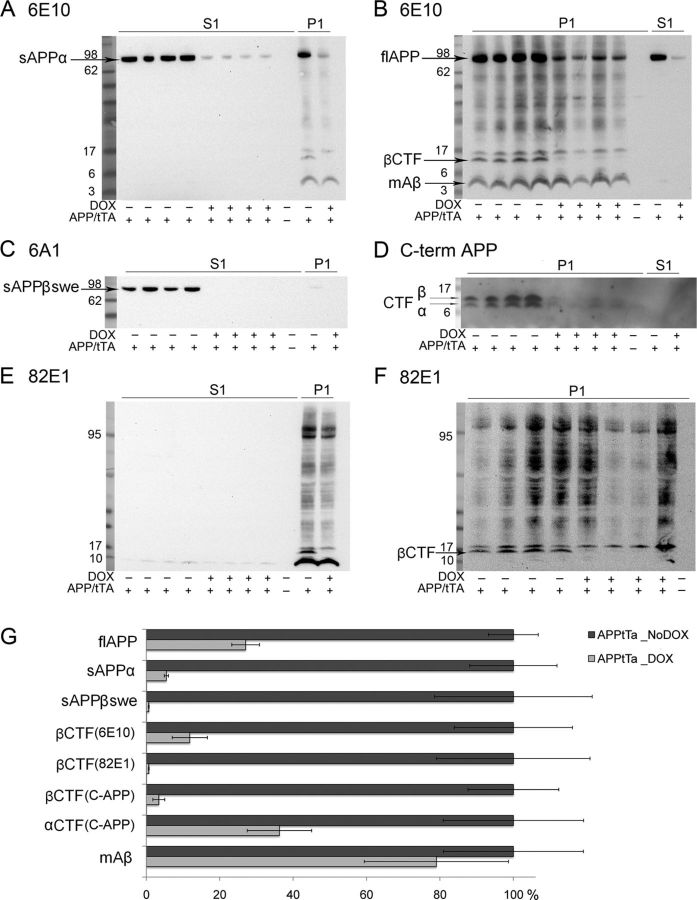Figure 6.
Immunoblot analysis of total protein extracts from cortical samples of mice that were behaviorally tested. All immunoblots include both cytosolic (S1) and membrane fractions (P1) and one control sample. A, B, Representative images of immunoblotting with 6E10 antibody, recognizing human monomer Aβ, transgene-derived full-length APP, and transgene-derived sAPPα from PBS-soluble (A) (S1, see Materials and Methods) and PBS-insoluble (B) (P1, see Materials and Methods) fractions. Fractions from NTg mice showed no immunoreactivity either in S1 or P1 fractions. DOX treatment resulted in decreased levels of high molecular weight APP (arrow), which includes membrane full-length APP (see P1, B) and soluble APPα (see S1, A). The mAb 6E10 also detected βCTFs (∼14 kDa, arrow), which disappeared after DOX treatment (B). C, The 6A1 antibody (IBL America) specifically recognizes soluble β APP fragment with Swedish mutation cleaved by BACE1 (sβAPPswe) (arrow), which is detectable only in cytosolic fractions (S1) of brains from APPsi:tTA mice Off-DOX. D, Representative image of immunoblotting with C-terminal APP antibody (Millipore), recognizing the α-CTF (C83) (lower arrow) and β-CTF (C99) (upper arrow) in membrane fraction; the levels of both dramatically decreased after DOX treatment. E, F, Representative images of immunoblotting with anti-human Aβ N- terminal end specific antibody 82E1 (IBL America). This antibody does not recognize full-length APP. G, The results of densitometry analyses for monomer Aβ, α-CTF, βCTFs, sAPPβ swe, sAPPα, and full-length APPsi in the immunoblots shown in A–F. The data are graphed with values for APPsi:tTA mice Off-DOX normalized to 100%.

